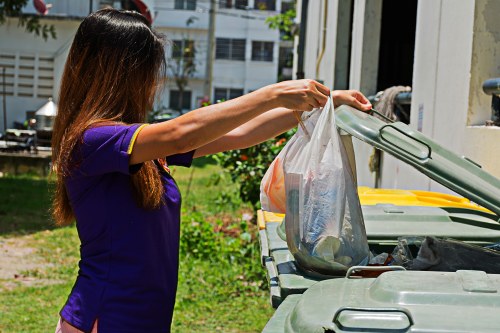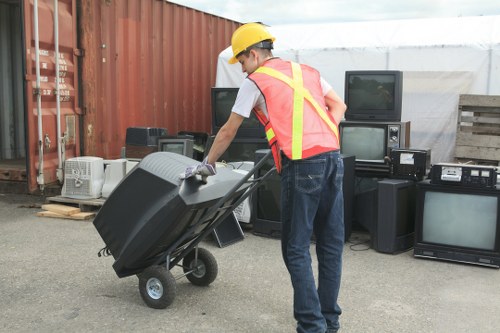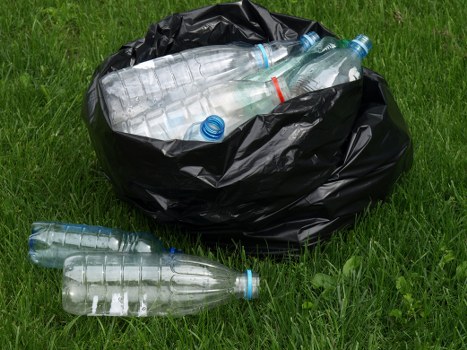Waste Recycling in Clearance London: A Comprehensive Guide

Introduction to Waste Recycling in Clearance London
Waste recycling has become an essential aspect of modern urban living, particularly in bustling cities like London. As the capital city grapples with increasing waste production, effective recycling strategies are imperative to maintain environmental sustainability and public health. This article delves into the intricacies of waste recycling in clearance London, exploring the processes, benefits, and the role of various stakeholders.
Clearance London plays a pivotal role in managing waste by ensuring that recyclable materials are efficiently processed and repurposed. The city's commitment to recycling not only reduces landfill usage but also promotes a circular economy where resources are reused, minimizing the environmental footprint.
Understanding the waste recycling system in London involves examining the types of waste collected, the facilities involved, and the legislation that governs these activities. From residential waste to commercial and industrial by-products, London has established a comprehensive framework to address diverse recycling needs.

The Importance of Waste Recycling
Recycling waste is crucial for several reasons, including conserving natural resources, reducing pollution, and mitigating the impacts of climate change. By recycling materials like paper, glass, metal, and plastic, London reduces the demand for virgin resources, thereby preserving ecosystems and biodiversity.
Moreover, effective recycling practices help lower greenhouse gas emissions by minimizing the need for energy-intensive production processes. For instance, recycling aluminum saves up to 95% of the energy required to produce it from raw materials, highlighting the significant environmental benefits.
Recycling also plays a role in economic development. It creates jobs in collection, processing, and manufacturing sectors, contributing to the local economy. Additionally, the recycled materials can be sold, providing an additional revenue stream for waste management companies and the city.

Types of Waste Recycled in London
Residential Waste
Residential waste constitutes a significant portion of the recyclable materials in London. Commonly recycled items include:
- Paper and Cardboard: Newspapers, magazines, cardboard boxes, and office paper.
- Glass: Bottles, jars, and other glass containers.
- Plastics: PET bottles, HDPE containers, and other recyclable plastic items.
- Metals: Aluminum cans, steel cans, and other scrap metal.
Commercial and Industrial Waste
Businesses and industries contribute to the recycling stream by disposing of various materials, including:
- Electronic Waste: Old computers, printers, and other electronic devices.
- Chemical Waste: Safe disposal and recycling of industrial chemicals.
- Construction and Demolition Waste: Bricks, concrete, and other building materials.
Hazardous Waste
Handling hazardous waste requires specialized recycling processes to prevent environmental contamination. This includes:
- Batteries: Proper recycling to prevent toxic chemicals from entering the ecosystem.
- Medical Waste: Safe disposal and recycling of medical supplies and equipment.
- Chemicals: Recycling of solvents and other hazardous materials.

Recycling Facilities and Infrastructure
Collection Points and Bins
London boasts an extensive network of recycling collection points and bins strategically placed throughout the city. These facilities are designed to make recycling convenient for residents and businesses alike. Different types of waste have designated bins to ensure proper segregation at the source.
Recycling Centers
The city operates multiple recycling centers equipped with advanced machinery to sort, process, and prepare materials for reuse. These centers handle everything from sorting paper and plastics to processing metals and glass, ensuring that each material is recycled efficiently.
Advanced Recycling Technologies
London is investing in cutting-edge recycling technologies to enhance the efficiency and effectiveness of waste processing. Innovations such as automated sorting systems, chemical recycling for plastics, and energy recovery from waste are being integrated to optimize recycling operations.

Legislation and Policies Supporting Recycling
London Waste Strategy
The London Waste and Recycling Board has developed a comprehensive waste strategy aimed at reducing waste generation and increasing recycling rates. Key components of the strategy include:
- Waste Reduction Targets: Setting ambitious goals for lowering overall waste production.
- Recycling Targets: Increasing the percentage of waste that is recycled annually.
- Public Awareness Campaigns: Educating the public on the importance of recycling and how to participate effectively.
Regulations and Compliance
Strict regulations ensure that waste management practices meet environmental standards. Businesses are mandated to comply with waste disposal and recycling laws, with penalties imposed for non-compliance. These regulations help maintain high recycling standards and protect London’s environment.
Incentive Programs
To encourage recycling, London offers various incentives such as tax breaks for businesses that implement sustainable waste management practices and grants for recycling initiatives. These incentives drive participation and investment in recycling infrastructure.
Benefits of Recycling in Clearance London
Environmental Benefits
Recycling significantly reduces the amount of waste sent to landfills, conserving space and reducing methane emissions from decomposing waste. It also minimizes pollution by decreasing the need for raw material extraction and processing, which are often environmentally damaging.
Economic Benefits
The recycling industry contributes to the economy by creating jobs and fostering innovation in waste management technologies. The resale of recycled materials provides additional revenue streams, benefiting both businesses and the city’s finances.
Social Benefits
Effective recycling programs enhance community well-being by promoting cleaner neighborhoods and reducing health hazards associated with waste disposal. Additionally, public participation in recycling fosters a sense of responsibility and community engagement.
Challenges in Waste Recycling
Contamination of Recyclables
One of the primary challenges in recycling is the contamination of recyclable materials with non-recyclable waste. Contaminated recyclables cannot be processed effectively, leading to increased costs and reduced efficiency in recycling operations.
Limited Recycling Facilities
Despite London’s extensive recycling infrastructure, there are still areas with limited access to recycling facilities. Expanding the network of collection points and investing in more recycling centers are essential to address this gap.
Public Participation
Achieving high recycling rates requires active participation from the public. However, lack of awareness, inconvenience, and behavioral inertia can hinder participation. Continuous education and making recycling more accessible are crucial to overcoming these barriers.
Future of Waste Recycling in Clearance London
Innovative Technologies
The future of waste recycling in London lies in embracing innovative technologies such as artificial intelligence for sorting recyclables, biodegradable materials to reduce waste, and advancements in recycling processes that enhance efficiency and output quality.
Circular Economy
London is moving towards a circular economy model where products are designed for longevity, reuse, and recycling. This approach aims to minimize waste generation and create sustainable systems that benefit the environment and economy.
Policy Enhancements
Strengthening policies and regulations will be pivotal in advancing recycling efforts. This includes implementing stricter waste management laws, offering more incentives for sustainable practices, and fostering collaboration between government, businesses, and communities.
How You Can Contribute
Proper Waste Segregation
Start by segregating your waste at the source. Separate recyclables from non-recyclables and ensure that items are clean and free from contaminants. This simple practice significantly improves the efficiency of recycling processes.
Reduce, Reuse, Recycle
Adopt the three Rs in your daily life. Reduce waste generation by opting for reusable products, reuse items whenever possible, and recycle materials that cannot be reused. This holistic approach minimizes waste and supports sustainability.
Participate in Local Programs
Engage with local recycling programs and initiatives. Participate in community clean-up events, support recycling drives, and stay informed about waste management policies in your area. Your involvement can make a significant impact.
Conclusion
Waste recycling in Clearance London is a collective effort that requires the participation of residents, businesses, and the government. By understanding the importance of recycling, utilizing available resources, and embracing sustainable practices, London can continue to thrive as a green and environmentally responsible city.
Emphasizing the benefits of recycling, addressing challenges, and investing in future technologies will ensure that waste management in London remains efficient and effective. Together, we can contribute to a cleaner, healthier, and more sustainable future.
Contact us today to learn more about waste recycling services in London or book your service now to make a positive impact on the environment.
